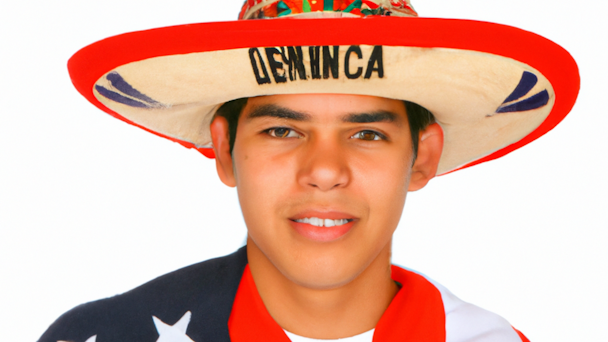Watch out marketers, AI tends to default to Latino stereotypes
Generative AI models are biased, just like the people who create them, writes David Vélez Mejia, strategy director at Remezcla.

An image generated by Dall-E 2 from the prompt ‘American Latino’ / David Vélez Mejia
Generative AI lacks the ability to accurately represent the full spectrum of Latino cultures. If we aren’t careful, it could lead to steps backward in the fight for Latino representation.
When I prompted Dall-E 2, a text-to-image AI model, to create an image of an ’American Latino’, I was impressed by how realistic the image was. But I was disappointed with the stereotypical use of a sombrero as the Latino identifier (see the image above).
For the past 15 years of my career as a multicultural strategist, I’ve been fighting the long-standing Latino stereotypes and cultural inauthenticity that reign supreme in media and beyond. Seeing the democratization of AI-enabled tech resurface the ’sombrero stereotype’, that for years has made me cringe, I began to wonder: can an AI platform be expected to rise above the unconscious biases of its creators?
Advertisement
I was recently asked to give my perspective on a report which used AI to measure ethnicity in video ads using two identifiable characteristics: visual recognition and language. Those two identifiers reminded me of the outdated segmentation models, strict language definitions and monolithic assumptions that have long been used to ’measure’ Latinos in the US, which made me skeptical about the report’s ’AI-driven’ methodology.
Don’t get me wrong, I’m excited about the future of AI. Still, as we run to embrace this new technology, we need to be aware that machine learning – at least as it currently stands – omits cultural nuances that are essential to the representation of the myriad of races, cultural identities, language fluidity and bicultural experiences of US Latinos. As AI continues to be adopted, it will especially need to be representative of Gen Z, the most ethnically diverse generation in history.
Here are some key factors to bear in mind when thinking about the intersection between AI and the representation of Latino culture:
Advertisement
Generative AI tech omits the racial diversity of Latinos
Latinos aren’t a racial monolith and prompting ’Latino/a’ into an AI generator can lead to stereotypical, biased depictions of this ethnic group. AI’s visual representations of Latinos can fail to be inclusive to Afro-Latinos, Asian-Latinos and other Latino ethnic subgroups. To demonstrate this flaw, I prompted an AI generator to create an image of a ’Latina’:

I then got a bit more specific with my prompts (’Asian Latina’, ’White Latina’ and ’Afro Latina’), leading to three images that more accurately represented Latina diversity:



Despite the broad diversity of Latinos, generative AI will tend to default to stereotypes when given basic instructions.
Generative AI tech does not fully capture linguistic diversity
Not all Latinos in the US speak Spanish and many are bilingual or English-dominant. It’s estimated that roughly 560 languages are currently spoken across Latin America.
Such vast linguistic diversity poses a problem for machine learning. For example, the Spanish word ’arrecho’ in Venezuela means ’to be angry’, but in Colombia, it means ’to be sexually aroused’. Current generative AI models cannot reliably detect this kind of subtle linguistic nuance.
Suggested newsletters for you
Generative AI currently lacks the capacity to fully represent ambicultural Latino experiences
Latino multiculturalism is a diverse spectrum that many people find challenging to navigate with complete accuracy. Add to this a blend of local and cultural nuances stemming from the US and the ambicultural Latino experience becomes even more complex. With such a wide array of experience to pull from and an additional layer of stereotypical media representation to sift through, AI struggles to represent Latino culture in an inclusive manner.
Generative AI could fundamentally change the way marketers work. But in these early stages, its inability to process multicultural information with accuracy has the dangerous potential to work against the progress we’ve made in representation and inclusivity. If we’re not careful, culturally insensitive images and language could become even more prevalent in marketing.
We need to find ways to make AI-enabled technology more inclusive and representative of Latinos. For brands and marketers, understanding how to filter out stereotypes and identify cultural nuances is key to reaching diverse audiences in a meaningful way. From the back end, we need to push for diverse Latino representation in the future of AI technological developments. Only through the inclusion of the full spectrum of Latinidad can we create AI technologies with fewer biases.
David Vélez Mejia is Strategy director at Remezcla.
For more on the latest happening in AI, web3 and other cutting-edge technologies, sign up for The Emerging Tech Briefing newsletter here.
